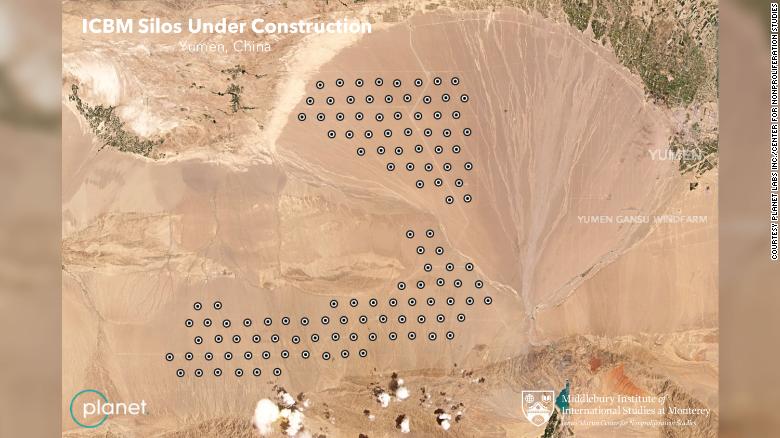China Strengthening Survivability of Nuclear Capable Missiles
Nuclear deterrence is not about just possession of nuclear weapons, but making adversaries believe that the state is capable of launching a nuclear strike.
If nuclear deterrence is needed to be strengthened, then nuclear forces need to be made survivable.
China, for years have worked towards strengthening the survivability of its nuclear capable missiles for three reasons.
One being the strengthening of nuclear deterrence, second, making its ‘no-first use’ nuclear doctrine more credible, and third, to make its ‘limited deterrence’ strategy more credible.
In July 2021, reports came in that China was building “sprawling network” of silos for ballistic missiles.
Though many reports claimed the silos are being built for intercontinental range ballistic missiles (ICBMs) like the DF-41, it is too early for such an analysis.
China’s DF-5/5A/5B/5C ICBMs are liquid fueled missiles and are better off if silo-launched.
This is because liquid fueled missiles need longer time for launch preparation and hence, not ideal for road/rail mobility.
At a time when China has focused on solid fueled missiles for increased survivability, it has also focused on strengthening the credibility of the DF-5 category ICBM systems.
Since they are liquid fueled ballistic missiles, these missiles have a high launch weight to throw weight ratio, enabling the missile to travel longer distances.
Liquid fueled missiles are heavier and, therefore, able to negate the range restrictions imposed by multiple independently targetable re-entry vehicles (MIRVs). Payload capacity of the DF-5 category ICBMs is also heavy and thus, these categories of missile systems can carry more number of lighter warheads.
The payload capacity of the DF-5 category ICBMs is more than that of the DF-31 and the DF-41 category ICBMS given the need to enable the latter two ICBMs to be mobile and rugged proof. Again, some of these silos could also be a “warm” reserved status as seen in the case of Minuteman ICBMs that have around fifty silos in such status- that is the silos do not host the missiles at the moment.
China has concentrated on both road/rail mobile ICBMs and also silo based ones to ensure there is a credible amalgamation of missiles that are mobile or in static position but with strengthened survivability.
China has for years focused on developing dummy silos to confuse adversaries in times of crisis against real silos.
Silo-based missiles, assuming they are liquid fueled, and have greater launch preparation time than solid fueled missiles, can be put on high trigger alert in times of crisis that could lead to catastrophic nuclear launches.
Revisionist states like China would not mind a nuclear attack on their territory, if they know they could launch devastating nuclear strikes on their adversaries.
However, should there be a ‘launch under attack’ scenario for China, silo-based missiles could be the best option for counter-strike launch. Moreover, silo-based missile systems given their static position have better networking with command and control than mobile missiles and are hence, more responsive.
Thus, launch of silo-based missile is much simpler.
Silo-based missiles only compliment mobile missiles and submarine launched ballistic missiles (SLBMs) in improving nuclear of a state.
Silo based missiles would always be under constant threat from U.S. Prompt Global Strike (PGS) systems as compared to mobile missile systems.
In fact, Russians started to replace their silo-based ICBM forces with mobile ICBM forces to mitigate threats from U.S. PGS capabilities.
China is strengthening its ‘limited deterrence’ strategy by maintaining silo-based missiles, mobile missiles, aerial delivery platforms and sea-based platforms so that in case nuclear deterrence fails in one case, China could still fight a nuclear war.
It is unlikely that China would stop maintaining silo-based missiles even as it possesses sophisticated mobile missile systems considering it has worked on survivability of its silo missile basing.
Featured photo: The purported locations of new Chinese ballistic missile silos are represented by dots in this annotated version of an image from commercial satellite company Planet Labs Inc.

